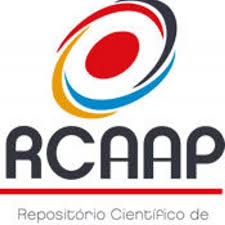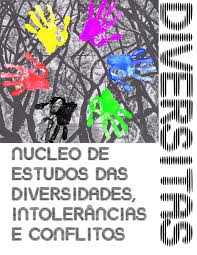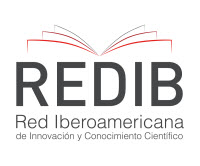Racionalización cultural de adicciones mediante representación narrativa del trauma poscolonial en reservas indígenas canadienses
Resumo
Palavras-chave
Texto completo:
PDFReferências
Adelson, Noemi (2004): “Being Alive Well”: Health and the Politics of Cree Well-Being, Toronto: University of Toronto Press.
Álvarez Roldán, Arturo (2008): La memoria amenazada, Granada: Ayuntamiento de Puebla de Don Fabrique.
Benton-Banai, Edward (1988): The Mishomis Book: the voice of the Ojibway, St. Paul, MN: Red School House.
Berman, Tressa (2003): Circle of Goods: Women, Work, and Welfare in a Reservation Community, Albany: State University of New York Press.
Bernard, Russell (2006): Research Methods in Anthropology: Qualitative and Quantitative Approaches, Fourth edition. Walnut Creek, CA: Altamira Press.
Bones, Robert (2003): The Geography of the Canadian North, Oxford University Press.
Brady, Maggie (1995): “Culture in treatment, culture as treatment. A critical appraisal of developments in addictions programs for indigenous North Americans and Australians”, Social Science and Medicine, 41: 1487-1498.
Brass, Gregory (2008): “Respecting the Medicines: Narrating an Aboriginal Identity”, en L. Kirmayer y G. Valaskakis (eds.), Healing Traditions: The Mental Health of Aboriginal Peoples in Canada, Vancouver: University of British Columbia Press.
Bruner, Edward (1986): “Ethnography as narrative”, en V. Turner y E. Bruner (eds.), The Anthropology of Experience, Urbana: University of Illinois Press.
(ed.) (1984): Text, Play and History: The Construction and Reconstruction of Self and Society, American Ethnological Society.
Canadian Institutes of Health Research (2007): Guidelines for Health Research Involving Aboriginal People, Ottawa: CIHR.
Chiefs of Ontario (2010): Take a stand. Prescription Drug Abuse Strategy Final Report, Toronto: Chiefs of Ontario.
Clifford, James (1988): The Predicament of Culture: Twentieth Century Ethnography, Literature and Art, Cambridge: Harvard University Press.
Comaroff, John y Jean Comaroff (1992): Ethnography and the Historical Imagination, Boulder: Westview Press.
Crawford, Robert (1994): “The Boundaries of the Self and the Unhealthy Other: Reflections on Health, Culture and Aids”, Social Science & Medicine, 38: 1347-1365.
Creswell, John (2003): Research design: Qualitative, quantitative and mixed methods approaches, Thousand Oaks, CA: Sage Publications.
CruikShank, Julie (2000): “Reinscribing Meaning: Memory and Indigenous Identity in Sakha Republic (Yakutia)”, Arctic Anthropology, 37(1): 96-119.
(1998): The Social Life of Stories: Narrative and Knowledge in Northern Canada, Lincoln: University of Nebraska Press and Vancouver: UBC Press.
(1990): Life Lived Like a Story: Life Stories of Three Yukon Native Elders, Lincoln: University of Nebraska Press and Vancouver: UBC Press.
Csordas, Thomas (1997): Language, Charisma and creativity, Berkeley y Los Angeles: University of California Press.
Dow, Fraser (2008): Envisioning Sustainable Forestry Communities in Northern Ontario. Tesis Máster. University of Waterloo.
Duran, Eduardo y Bonnie Duran (1995): Native American Postcolonial Psychology, Albany: New York Press.
Dyck, Noel y James B. Waldram (eds.) (1993): Anthropology, Public Policy, and Native Peoples in Canada, Montreal & Kingston: University Mc-Gill-Queen Press.
Fabian, Johannes (2006): “The other revisited. Critical afterthoughts”, Antropological Theory, 6 (2): 139-152.
Fast, Phyllis (2002): Northern Athabascan survival: Women, community, and the future, Lincoln, NE: University of Nebraska Press.
Flanagan, Tom (2008): First Nations? Second Thoughts, Montreal: McGill-Queen’s University Press.
Garro, Linda y Cheryl Mattingly (eds.) (2000). Narrative and the Cultural Construction of Illness and Healing, Berkeley y Los Angeles: University of California Press.
Good, Byron (1994): “Illness Representations in Medical Anthropology: A Reading of the Field”, en B. Good, Medicine, Rationality, and Experience, Cambridge University Press.
Grobsmith, Elizabeth (1994): Reassessing Revitalization Movements: Perspectives from North America and Pacific Island, Lincoln/London: University of Nebraska Press.
Health Canada (2008): A Report on Mental Illnesses in Canada, Ottawa: Public Health Agency of Canada.
Hunt, Linda (2000): Strategic Suffering. Illness Narratives as Social Empowerment among Mexican Cancer Patients, en L. Garro y C. Mattingly (eds.), Narrative and the Cultural Construction of Illness and Healing, Berkeley and Los Angeles: University of California Press.
Indian and Northern Affairs Canada [INAC] (2010): Registered Indian Population by Sex and Residence, Ottawa: Department Aboriginal Affairs and Northern Development Canada.
Jones, David (2004): Rationalizing Epidemics: Meanings and Uses of American Indian Mortality since 1600, Cambridge: Harvard University Press.
Kamat, Vinay (2008): “This is not our culture! Discourse of nostalgia and narratives of health concerns in post-socialist Tanzania”, Africa, 78: 359-383.
Kienzler, Hanna y Duncan Pedersen (2007): Using Qualitative and Quantitative Research Methods in the Study of Mental and Trauma-related Disorders, Douglas Mental Health University Hospital: Research Centre McGill University.
King, Malcolm, Alexandra Smith, y M. Gracey (2009): “Indigenous health part 2: the underlying causes of the health gap”, The Lancet, 374: 76-85.
Kirmayer, Laurence, y Gail Valaskakis (eds.) (2008): Healing Traditions: The Mental Health of Aboriginal Peoples in Canada, Vancouver: University of British Columbia Press.
Kleinman, Arthur (1988): The illness Narratives: suffering, healing, and the human condition, New York: Basic Books.
Kuper, Adam (2005): Cultura. La versión de los antropólogos, España: Paidós.
Kuzel, Anton (1999): “Sampling in qualitative inquiry”, en B. Crabtree y W. Miller (eds.), Doing qualitative research, New Delhi: Vistaar Publications.
Linde, Charlotte (1993): Life Stories: The Creation of Coherence, New York: Oxford University Press.
Lock, Margaret y Nancy Scheper-Hughes (1996): “A critical-interpretative approach in medical anthropology: Rituals and routines of discipline and dissent”, en C. Sargent y T. Johnson (eds.), Handbook of medical anthropology: Contemporary theory and method, United Kingdom: Greenwood Press.
Miles, Matthew y Michael Huberman (1994): Qualitative data analysis, Thousand Oaks, CA: Sage Publications.
O’Nell, Theresa (1998): Disciplined Hearts. History, Identity, and Depression in an American Indian Community, Berkeley, CA: University of California Press.
Pickering, Kathleen (2000): Lakota Culture, World Economy. Lincoln: University of Nebraska Press.
Polleta, Francesca et al. (2011): “The Sociology of Storytelling”, Annual Review of Sociology, 37: 109-30.
Quintero, Gilbert (2002): “Nostalgia and Degeneration: The Moral Economy of Drinking in Navajo Society”, Medical Anthropology Quarterly, 16: 3–21.
Rogers, Edward y Donald Smith (eds.) (1994): Aboriginal Ontario. Historical Perspectives on the First Nations, Toronto: Dundurn Press.
Rohner, Ronald y Evelyn C. Bettauer (1970): The Kwakiutl: Indians of British Columbia, Prospect Heights: Waveland Press.
Ruiz-Callado, Raúl (1999): “Comentarios a propósito del trabajo de campo”, Estudios Metodológicos, 1: 70-71.
Sahlins, Marshall (1993): "Goodbye to Tristes Tropes: Ethnography in the Context of Modern World History," The Journal of Modern History Vol. 65 (1): 1-25.
Sioux Lookout First Nations Health Authority (2009): Chiefs forum on social issue: answering the call for help: reducing prescription drug abuse in our communities, Sioux Lookout, ON: Sioux Lookout First Nations Health Authority.
Spicer, Paul (1998): “Narrativity and the representation of experience in American Indian discourses about drinking”, Culture, Medicine, and Psychiatry, 22: 139-169.
Stromberg, Peter (2008): Language and self-transformation: a study of the Christian conversion narrative, Cambridge: Cambridge University Press.
Tanner, Adrian (2008): “The origins of Northern Aboriginal social pathologies and the Quebec Cree Healing Movement”, en L. Kirmayer, y G. Valaskakis, (eds.), Healing Traditions: The Mental Health of Aboriginal Peoples in Canada, Vancouver: University of British Columbia Press.
Vírchez, Jorge y Maricela Faucheux (2012): “Life in the James Bay Lowland. Past, Present and Future”, Revista Mexicana de Estudios Canadienses, 22: 29-53.
y Ronald Brisbois (2007): “A Historical and Situational Summary of Relations Between Canada and the First Nations: The Case of the Community of Kashechewan in Northern Ontario”, Revista Mexicana de Estudios Canadienses, 14: 87-100.
Waldram James, D. Herring y T. Young (2006): Aboriginal health in Canada: Historical, cultural and epidemiological perspectives, Toronto: University of Toronto Press.
(2004). Revenge of the Windigo: The construction of the mind and mental health of North American Aboriginal peoples, Toronto: University of Toronto Press.
(1997): The way of the pipe: Aboriginal spirituality and symbolic healing in Canadian prisons, Peterborough: Broadview Press.
Warry, Wayne (1998): Unfinished Dreams: Community Healing and the Reality of Aboriginal Self-Government, Toronto: University of Toronto Press.
Yahn, Janis (2009): Impact of the Ontario Works Program on the Quality of Life of Aboriginal People Living on Reserve in Northern. Tesis Doctoral. Lakehead University.
Apontamentos
- Não há apontamentos.
ISSN eletrônico: 1984-5677
ISSN impresso: 1519-0994





















